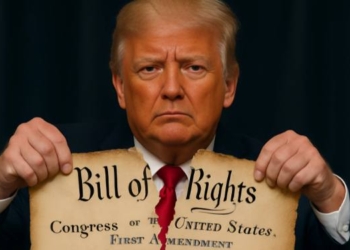
By Yoshita Swarup Sharma
If you were to do a google search to look for how to be more confident, you're going to get a whole host of suggestions and advice that would range from “love yourself” to “being positive and looking for positive in every situation” to “trying something new” and “knowing your strengths”. However, as a leadership coach, I do come across a lot of people who struggle with self-confidence, and in my experience, here are some things that you can do to handle this lack of confidence.
Step 1 – Know Yourself
When I say “know yourself”, I'm not talking about knowing your strengths, but I'm talking about really deeply understanding the situations where you feel the lack of confidence. These could be different kinds of situations. For example, it could be a lack of confidence at work or in a meeting, or when suddenly asked a question. Maybe one feels tongue-tied, unable to say what they want to say. The way to build awareness of these situations is to start journaling. Every day, write down incidents that have taken place where you felt unsure or lacking in confidence, in your journal.
Step 2: Identify the Pattern
Once you have done journaling for, let's say, 15 days, you would be able to identify a pattern. This means that while there could be different types of situations where you don’t feel confident, there is likely to be an underlying theme around which your confidence gets shaky. For some people, it could be that it's shaky around people in authority, like clients or bosses, or elders. It could be a lack of confidence when you're in the spotlight. Or it could be a lack of skill/ capability that is making you feel that way.
For example, through journaling, you may figure out that every time you’re suddenly asked a question or when you have to do public speaking in front of a large group, you feel inadequate. Whatever your pattern, you need to be able to identify that.
Step 3: Identify the Underlying Belief
Having understood the pattern, the next step is to dig deeper and identify the underlying belief, because of which you lack confidence. Once, a client of mine was really struggling with her confidence. After many souls searching, what emerged was that her underlying belief was that “I don't know how to express myself clearly.” This was strange because she could express herself quite clearly. She was extremely articulate, but her belief was that she was not a good communicator. Whenever she was called upon by anyone to answer a specific question or to talk about a certain situation, she would just feel a panic attack coming on to her.
Step 4: Identify the Genesis of the Belief
Once you are able to identify the belief, you have to look for the genesis of that belief. Sometimes, people skip that step. But I think it's a very important step. You must ask yourself, “ Why do I believe this about myself? Where did I first hear it? Who did I hear it from? Who were the people who made me believe that I am lacking in this aspect of myself?” Most of the time, this lack of confidence comes from outside. It has come from someone's opinions of us that we have accepted as truth, maybe at a very young age. It is very important to understand this. Sometimes you're even able to access an old memory of a teacher or a parent saying something in childhood in a given situation. As a child, we take their word as gospel truth and that becomes our narrative of how we see ourselves. So, when you start understanding the genesis of a belief, you can separate from it. You can see it from a different perspective, without getting attached emotionally to it.
Step 5: Question the Belief & Reframe It
Identifying a belief and its genesis allows us to move forward. We can now question the belief and reframe it. You can question the belief by asking: “Is this really true?” For example, if I think I'm not articulate, I ask myself, “is it really true? What is the evidence supporting it and what is the evidence against it?” And then, you start understanding that, it’s not true. In the above example, my client was able to think of a situation, where she was able to express herself really well and even got appreciated for that. So, she realized that it is her limiting belief. Once you realize your limiting belief, you can reframe it. You can look at the situation again and reframe it in a different way. So, for example, the belief that “I cannot express myself well” or “I'm not good at articulation” can be reframed as “If I'm well-prepared, I can speak with a lot of logic”.
Step 6: Affirmations and Experimentation
Finally, when you are trying to replace old beliefs with new ones, you have to do two things – affirmations and experimenting with new behaviors. Affirmations refer to repeating the new belief statement to yourself such that it forms new neural pathways in our brain, ie new ways of thinking about the situation. Secondly, you support the affirmations with new behaviors that will help you gain confidence in certain situations. For example, you have reframed the belief that when you are well-prepared, you can articulate very effectively. Now, you can support that new belief with the behavior of going through that extra preparation. Thus, you feel more equipped, more confident, and more ready to deal with the situation that was earlier making you feel inadequate. Doing this repeatedly over a period of time is a good way to build genuine confidence.
I hope you can follow these 6 steps of deeper exploration of your lack of confidence. That way, you are much more likely to understand its root cause, and then to replace limiting beliefs with new beliefs and new behavior. And don’t forget, you are awesome!

Yoshita Swarup Sharma, CEO & Founder of A Brighter Life, is an internationally certified executive coach (PCC). For the last ten years, she has coached several senior leaders and CXO across the globe. She brings with her 22 years of overall experience and has worked as a Marketing professional incorporating Coca-Cola, Dabur, and Ranbaxy in brand management roles handling brands like Volini, Gulabari, Hajmola, etc, and doing P&L management. Recently she was awarded as one of the most influential coaching leaders of India by the World HRD Congress. She's a leadership facilitator, advanced NLP Practitioner, and a specialist on personal transformation. Themes that she has worked on include stakeholder management, building executive presence, developing people, becoming an inspiring communicator, etc. She frequently conducts leadership workshops and has worked with clients like L'Oréal, Adidas, Vodafone, Siemens, HDFC Bank, ITC, and many more. She's also a Kathak student and founder of Subah, A Covid Widow support group.
















